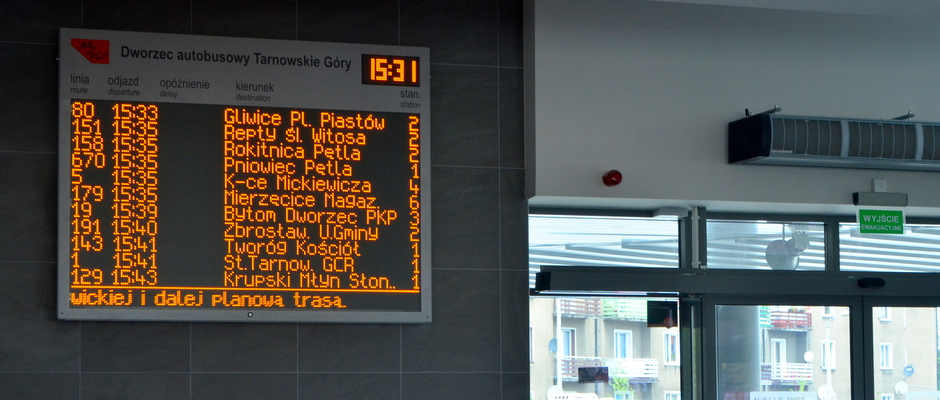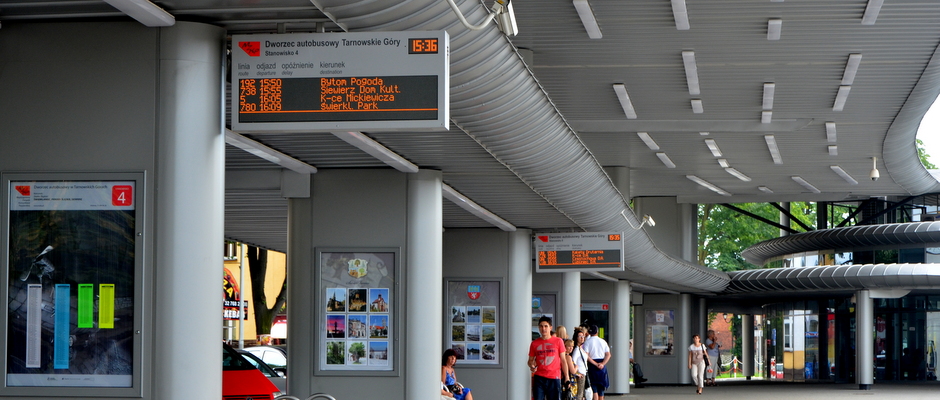Transfer center and passenger information
Transfer center
The transfer center concentrates means of transport in one place and facilitates the movement of travelers. Therefore, transfer hubs are built in strategic locations in the city where different types of transport – road and rail – meet. Integrated transfer hubs combine the elements necessary for passenger service: stops / platforms / departure stations, parking spaces for public transport vehicles, park & ride parking spaces, bicycle parking, ticket sales points and a passenger information system.
A modern transfer center ensures efficient service for passengers traveling by various means of transport, e.g. trains, metropolitan railways, city/regional/provincial buses, trams or metro.
The role of the integrated transfer hub:
- minimizing passenger travel time between stops and platforms
- reducing time losses associated with waiting for the next means of transport to arrive
- transparent and comprehensive passenger information for travelers
- facilities for people with disabilities
- providing appropriate facilities for passengers – ticket sales point, waiting room, cafe, shopping outlets
Passenger information at the transfer center
In addition to amenities related to the facility’s infrastructure, the passenger needs transparent information and directions presenting the place and time of departure of vehicles.
Easier search
In the case of a transfer hub, in addition to displays at departure stations, collective passenger information boards are also installed. The collective passenger information display is installed at points of increased passenger traffic, most often in waiting rooms. It helps travelers search for vehicles and indicates not only the line number, destination and travel time, but also the stand/platform number from which the vehicle departs.

Real-time information
The dynamic passenger information board presents the current arrival time of the means of transport. Thanks to this, the passenger receives “here and now” information about the planned departure time. The boards can also display special messages, e.g. information about a possible delay or cancellation of a course.
Simplicity and transparency
After reading the information displayed on the passenger information board, the passenger should know when and where a given vehicle leaves. Therefore, passenger information in the transfer center should be transparent and simple.
Durability
It is worth focusing on the durability of the solutions used. External passenger information boards should be resistant to weather conditions, work at both low and high temperatures, with high and low sunlight, and have protection against acts of vandalism and dust getting inside the electronics.

Transfer center project
The concept of operation of the passenger information system and the arrangement of devices such as passenger information boards, info kiosks, and sound systems should be planned at the design stage of a given facility.
The solution design team for dynamic passenger information systems from DYSTEN is here to help.
Contact us: its@dysten.pl